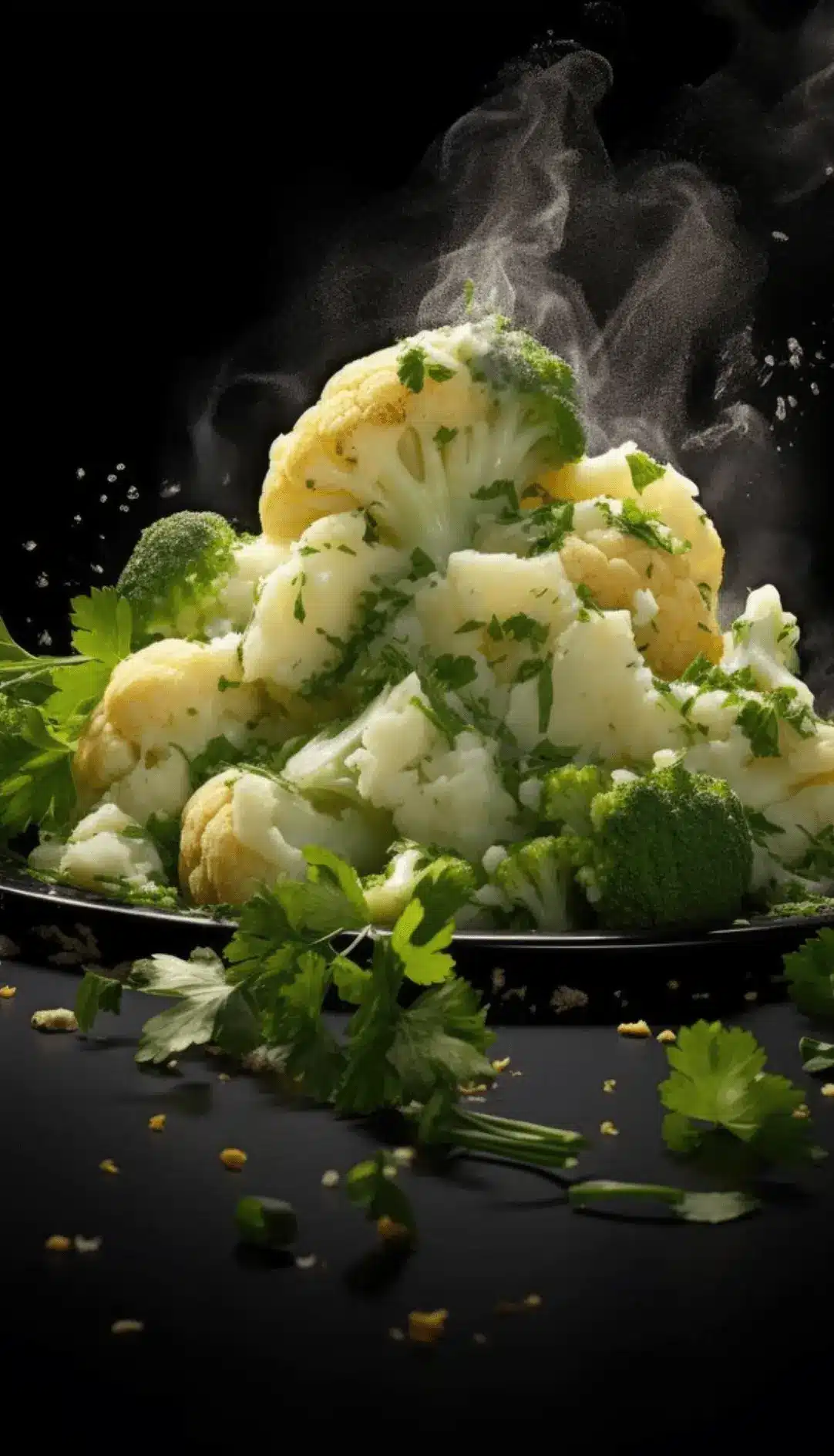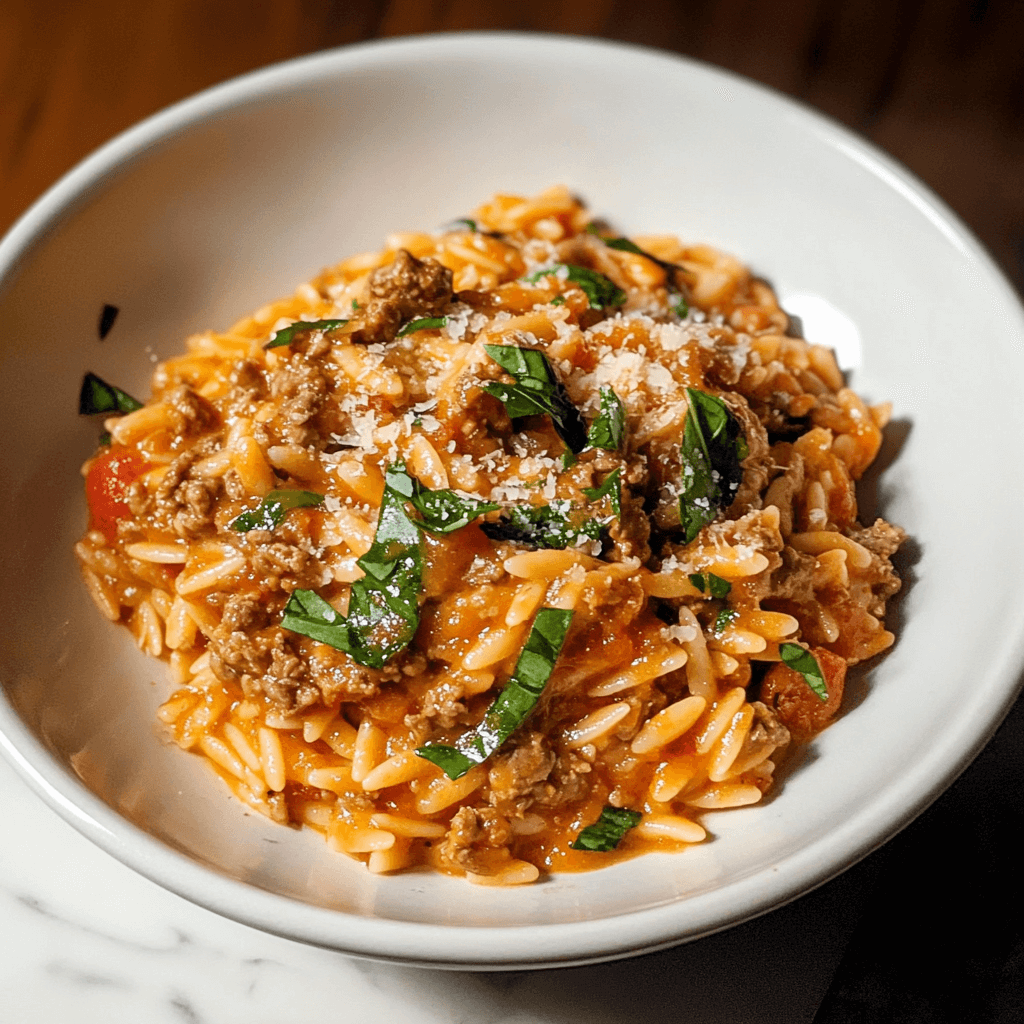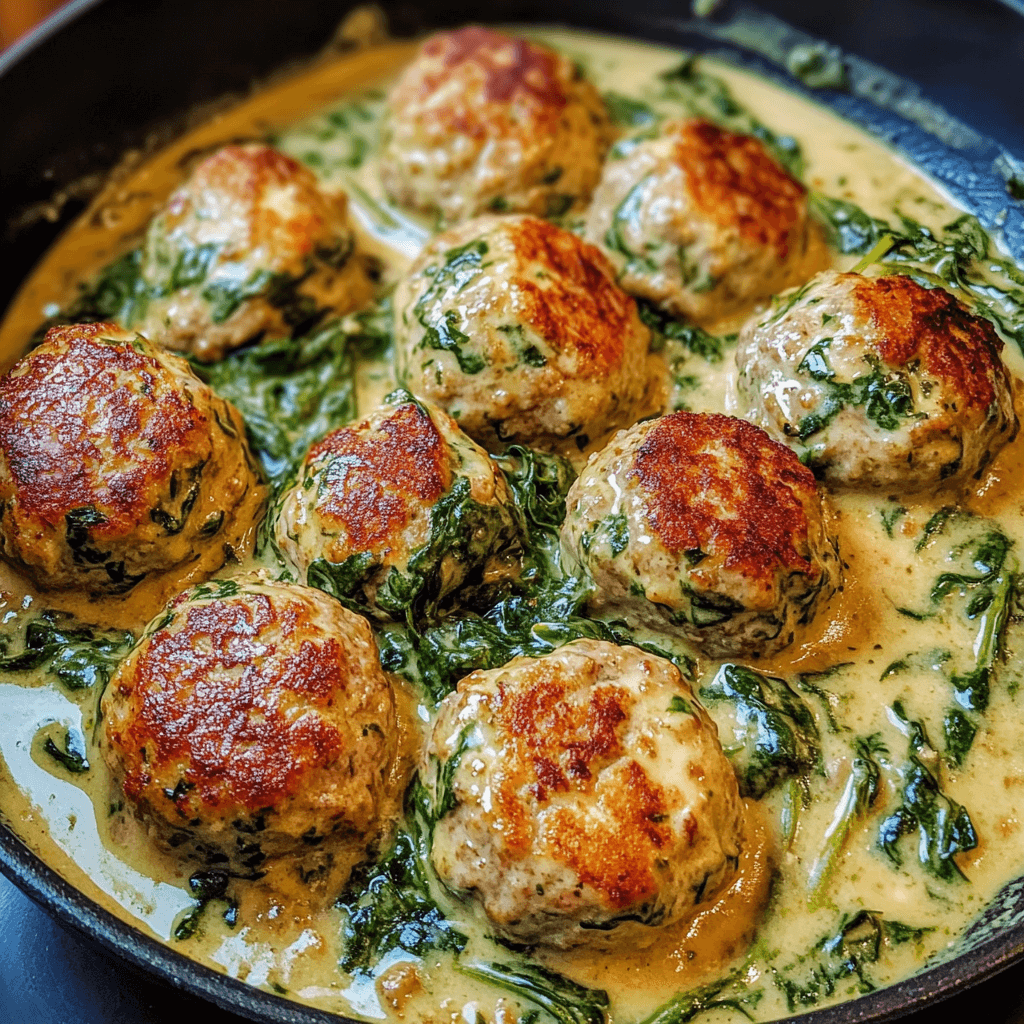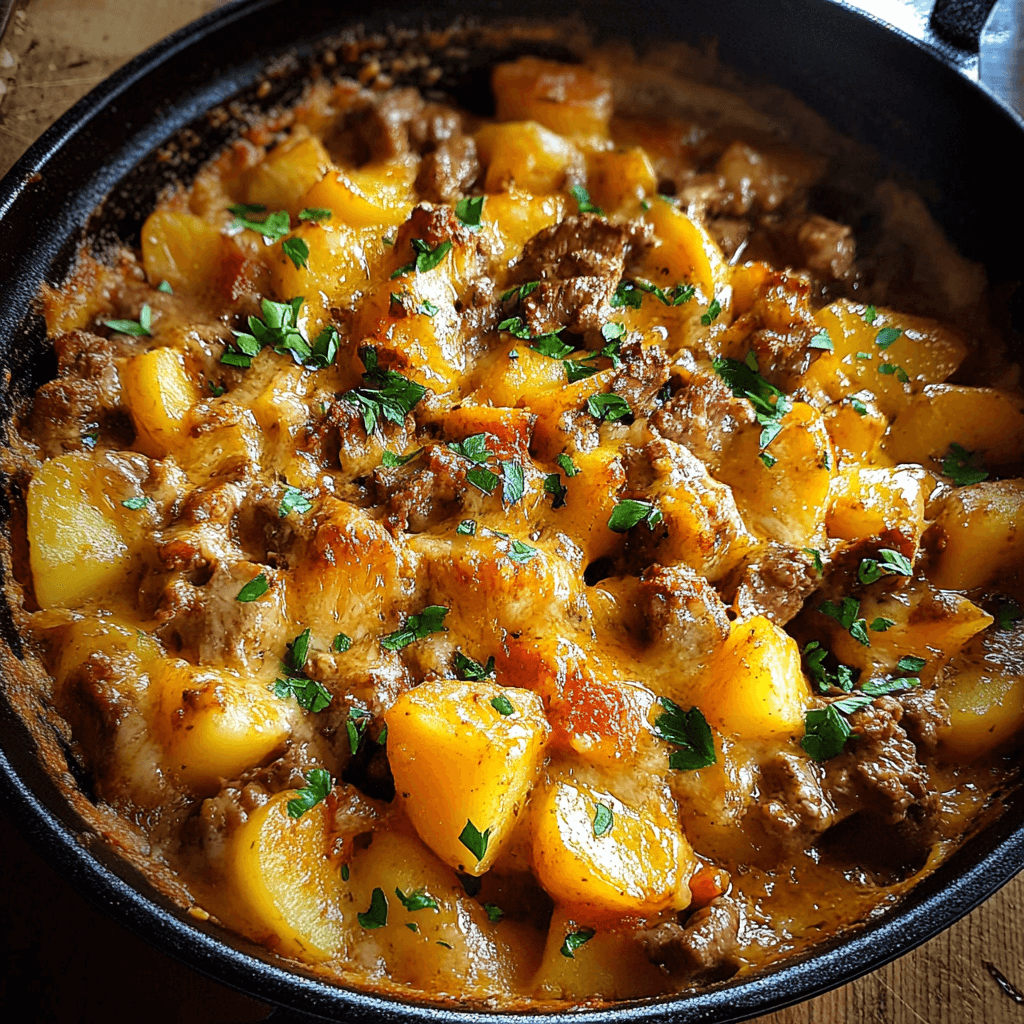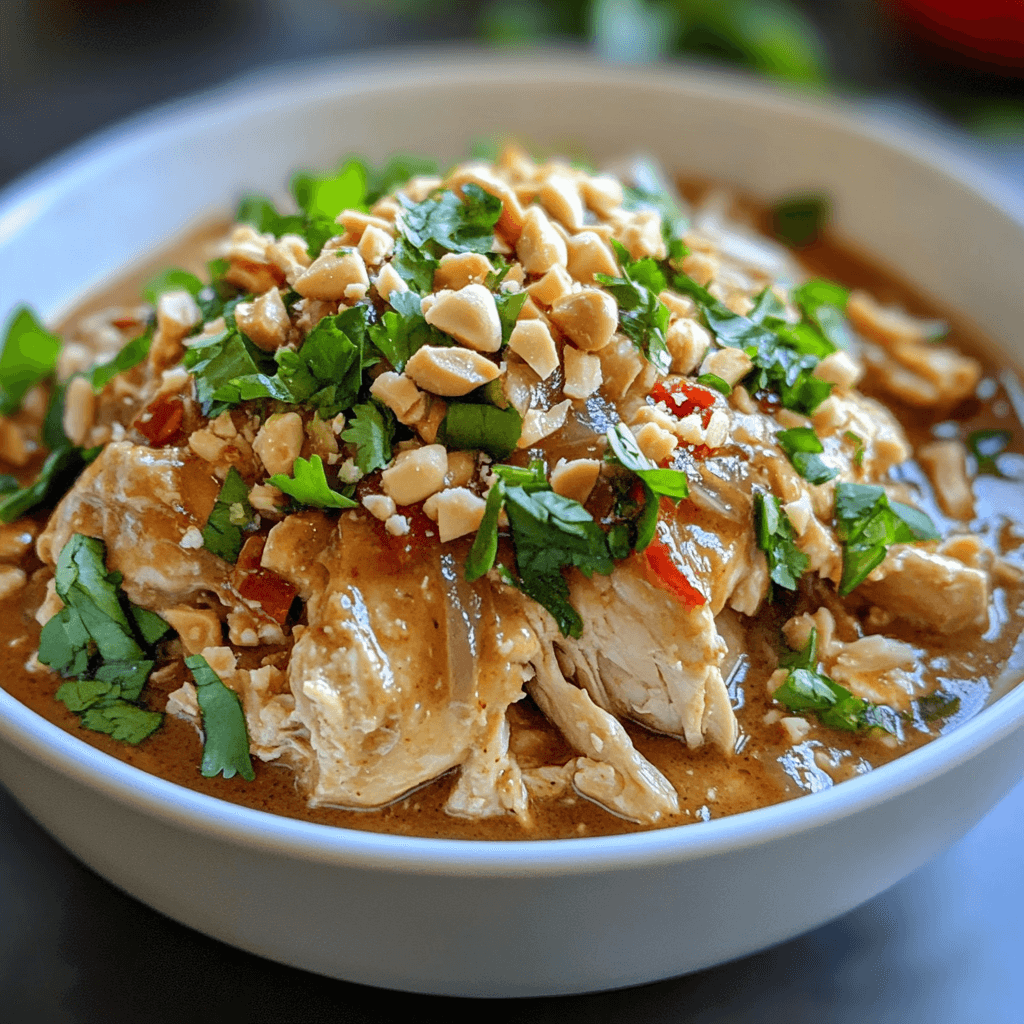Understanding Cauliflower: A Canvas for Flavor
When pondering what brings out the flavor of cauliflower, it’s essential to start at the very beginning. Cauliflower, with its tight clusters of florets and sturdy stem, is like a blank canvas awaiting the brushstrokes of flavor. Its subtle, nutty, and slightly sweet taste makes it versatile for various culinary techniques. To truly understand its potential, we must delve into its characteristics.
Cauliflower’s cellular structure allows it to absorb and retain flavors exceptionally well. Whether it’s the aromatic warmth of turmeric or the sharp bite of garlic, the florets take on these flavors, creating a symphony of taste on the palate. Moreover, the cauliflower’s density means it can withstand high-heat cooking methods, which caramelize its natural sugars and bring out a depth of flavor that milder cooking methods can’t match.
To unlock cauliflower’s taste, it’s crucial to understand the balance of flavors it needs. A hint of acidity, a touch of sweetness, a dash of umami – each component plays a pivotal role in highlighting cauliflower’s best qualities. A squeeze of lemon juice or a sprinkle of parmesan can elevate the vegetable from simple to sublime. This cruciferous veggie isn’t just about the taste it presents on its own but how it harmoniously blends with other ingredients to create a dish that’s greater than the sum of its parts.
Prep Talk: The First Step to Flavorful Cauliflower
The journey to flavorful cauliflower begins long before it hits the pan or the oven. Preparation is key, and it starts with selecting the right head of cauliflower. Look for tight, creamy white florets and vibrant green leaves – these are signs of freshness. Once home, the way you cut the cauliflower can influence the flavor. Smaller florets have more edges for caramelization, which means more flavor.
The next critical step is to clean it properly. Dirt and impurities can hide in the nooks of the florets, which can lead to a gritty texture and off-flavors. A soak in salt water not only cleanses but can also draw out any unwelcome critters that have made the cauliflower their home.
Techniques to Transform: Cooking Cauliflower Right
What brings out the flavor of cauliflower? It’s not just what you add to it; it’s also how you cook it. Each cooking method unlocks a different dimension of taste and texture. Roasting at high temperatures causes the edges of the florets to caramelize, bringing out a nutty, almost sweet flavor. Steaming, on the other hand, preserves the vegetable’s natural taste and is excellent for when you want the cauliflower to be a subtle backdrop for more assertive flavors like a punchy cheese sauce or a spicy curry.
The intensity of sautéing in a hot pan with a bit of oil not only adds a golden hue but also incorporates the flavors of any aromatics used. Imagine cauliflower florets sizzling with garlic and red pepper flakes – the heat encourages the release of oils and spices that cling to and penetrate the florets.
The cooking medium also plays a role in flavor. Sautéing in butter, for example, introduces a richness that is entirely different from olive oil, which can bring a fruity or peppery note, depending on its variety. And let’s not forget about the maillard reaction, a chemical process that occurs when proteins and sugars in food are transformed by heat, leading to new flavors and brown coloring. This is what makes a seared cauliflower steak so deliciously irresistible.
Introduction: The Magic of Cauliflower
What brings out the Flavour of cauliflower?
To bring out the flavor of cauliflower, various methods and ingredients can be employed:
- Herbs: Using a blend of herbs can enhance the flavor of cauliflower. For instance, a combination of chopped parsley, dill, and tarragon can be used. Alternatively, basil can also be paired with it. Source
- Roasting: Simply brushing cauliflower (either whole or in florets) with olive oil and roasting it in the oven can make it taste better. Roasting transforms raw cauliflower into a golden, caramelized delight. Source
- Searing with Asian Flavors: After cooking the cauliflower until it’s tender, you can sear it with some oil, green onions, and garlic. Adding soy sauce and other Asian flavors can further enhance its taste. Source
- Seasoning: Seasoning the cauliflower with garlic, onion, paprika, or other spices can elevate its flavor. If you’re not a fan of garlic or onion, you can experiment with other spices to find a combination that suits your palate. Source
- Blending with Nuts: Topping cauliflower with a bit of olive oil, cracked black pepper, and even nuts like hazelnuts or cashews can make it taste even better. Source
Experimenting with different combinations can help you find the perfect flavor profile for your palate.
Historical Use of Cauliflower in Cuisine
Cauliflower has been a staple in various cuisines for centuries. Ancient civilizations recognized its potential and incorporated it into their dishes, laying the foundation for the culinary masterpieces we enjoy today.
The Science Behind Cauliflower’s Unique Taste
What brings out the Flavour of cauliflower? The unique taste and appearance of cauliflower, especially the Romanesco variety, can be attributed to its scientific and botanical characteristics:
Romanesco Cauliflower:
- Romanesco cauliflower is one of the most distinctive and contemporary-looking vegetables. Its peculiar shape arises from its formation from failed flowers.
- Like standard cauliflowers, Romanescos are a result of selective breeding of the plant Brassica oleracea. This plant is also the origin of several other common vegetables such as cabbage, broccoli, and kale.
- The intriguing shape of Romanesco cauliflower is due to its initial development as a flower that doesn’t reach its final stage. It continuously produces buds that don’t fully develop into flowers, resulting in a visible pyramid-like structure.
- Scientist François Parcy of the French National Centre for Scientific Research and his team studied Romanesco Cauliflower and found that the raised figures on it are indeed buds.
- The taste of Romanesco Cauliflower is reminiscent of peanuts. It is rich in essential nutrients like Vitamin C and K. Additionally, it contains fiber, protective carotenoids, and a group of phytochemicals that shield our bodies from molecular degeneration.
- This unique vegetable originates from Italy and has gained popularity worldwide.
The Romanesco cauliflower, with its pyramid-like structure and peanut-like taste, is a testament to the wonders of nature and human ingenuity in agriculture.
Role of Cooking Techniques in Enhancing Flavor
What brings out the Flavour of cauliflower? The method you choose to cook cauliflower can significantly impact its flavor. Roasting, for instance, caramelizes the sugars, leading to a nuttier taste, while steaming preserves its natural essence.
Importance of Seasoning and Spices
They play a crucial role in enhancing the flavor, aroma, and overall appeal of dishes, as well as offering numerous health benefits. Here’s a detailed look at their significance:
-
Flavor Enhancement:
- Seasonings and spices can transform a bland dish into a flavorful masterpiece. They add depth and complexity to the taste, making food more enjoyable and appetizing.
-
Aroma:
- The aromatic compounds in spices stimulate our olfactory senses, making dishes more enticing. The aroma of a dish can significantly influence our perception of its taste.
-
Cultural Significance:
- Spices and seasonings are deeply rooted in various cultures and traditions. They play a central role in defining regional cuisines and have been traded across continents for centuries.
-
Preservation:
- Historically, spices like salt, cloves, and cinnamon were used to preserve food, especially meats, due to their antimicrobial properties. This helped in extending the shelf life of perishable items.
-
Health Benefits:
- Many spices have medicinal properties and offer a range of health benefits. For instance, turmeric contains curcumin, which has anti-inflammatory effects, while garlic is known for its cardiovascular benefits.
- Spices can also aid in digestion. For example, ginger can help alleviate nausea, and cumin can assist in digestion.
-
Reduced Sodium and Fat Intake:
- By using spices and seasonings, chefs can reduce the amount of salt or fat needed in a dish without compromising on flavor. This can lead to healthier meal options.
-
Color and Visual Appeal:
- Spices can add vibrant colors to dishes. Paprika, saffron, and turmeric, for instance, can impart beautiful hues, making meals visually appealing.
-
Texture:
- Some seasonings can alter the texture of dishes. For example, sesame seeds can add a crunchy element to salads or bread.
-
Economic Importance:
- The spice trade has historically been a significant economic activity. Even today, the cultivation, processing, and trading of spices provide livelihoods for millions worldwide.
-
Mood Enhancement:
- Certain spices, like saffron, are known to have mood-enhancing properties, potentially helping in alleviating symptoms of depression.
In conclusion, seasonings and spices are indispensable in the culinary world. They not only elevate the taste and aroma of dishes but also offer a plethora of health benefits. Their cultural, economic, and medicinal significance makes them an integral part of our daily lives.
The Impact of Freshness on Flavor
What brings out the Flavour of cauliflower? Freshly harvested cauliflower, with its crisp texture, is more flavorful than its older counterparts. The freshness ensures that the vegetable retains its natural juices, leading to a juicier and more flavorful dish.
Cooking Methods: Boiling vs. Steaming vs. Grilling
What brings out the Flavour of cauliflower? Each cooking method imparts a different flavor to the cauliflower. While boiling might make it softer, grilling can infuse it with a smoky flavor.
The Art of Presentation and Garnishing
They say we eat with our eyes first. A beautifully presented cauliflower dish can enhance the overall dining experience, making the vegetable taste even better.
Popular Cauliflower Dishes Around the World
What brings out the Flavour of cauliflower? From the Indian ‘Gobi Masala’ to the Italian ‘Cauliflower Pizza’, this vegetable has made its mark in various cuisines, showcasing its adaptability and flavor potential.
Cauliflower Cheese (United Kingdom)
A classic British favorite, Cauliflower Cheese is a simple yet indulgent dish. Tender cauliflower florets are smothered in a creamy, rich cheese sauce and then baked until golden and bubbly. It’s often served as a side dish during Sunday roasts and is a testament to the comforting nature of British cuisine.
Cauliflower Rice (Global)
With the rise of low-carb and ketogenic diets, cauliflower rice has gained global popularity. By grating cauliflower into small granules and stir-frying it, you get a dish that closely resembles traditional rice in texture but with a fraction of the carbs. It’s a versatile base that can be paired with a variety of sauces and proteins.
Cauliflower Pizza Crust (Global)
For those seeking a gluten-free or low-carb alternative to traditional pizza dough, cauliflower pizza crust is a revelation. Made primarily from cauliflower, cheese, and eggs, this crust offers a tasty foundation for all your favorite pizza toppings. It’s crispy, delicious, and a healthier twist on a classic favorite.
Tabbouleh with Cauliflower (Middle East)
Tabbouleh is a refreshing Middle Eastern salad traditionally made with bulgur wheat. In this innovative version, cauliflower is processed to a rice-like consistency and combined with fresh parsley, tomatoes, and a zesty lemon dressing. It’s a light and nutritious dish perfect for warm weather.
Gobi Manchurian (India)
A testament to the fusion of Indian and Chinese cuisines, Gobi Manchurian is a spicy, tangy delight. Crispy fried cauliflower florets are drenched in a bold sauce made with soy, garlic, and chili. It’s a popular appetizer in many Indian restaurants and offers a burst of flavors with every bite.
Cauliflower Soup (Various Regions)
Across many cultures, cauliflower soup stands out as a creamy, comforting dish. Made by blending cooked cauliflower with broth and often enhanced with herbs and spices, this soup is both hearty and nutritious. It’s a warm embrace in a bowl, perfect for chilly days.
Roasted Cauliflower (Mediterranean & Middle East)
Roasting brings out the natural sweetness of cauliflower. In this dish, florets are seasoned, drizzled with olive oil, and roasted until caramelized. The result is a side dish with a deep, nutty flavor, often enhanced with spices like za’atar or cumin in Middle Eastern versions.
Pickled Cauliflower (Various Regions)
Pickling is a preservation method that imparts a tangy flavor to vegetables. Cauliflower, when pickled with vinegar and spices, becomes a crunchy and tangy accompaniment to many meals, perfect for adding a burst of flavor.
Cauliflower Steaks (Global)
A favorite among vegetarians and vegans, cauliflower steaks are thick slices of cauliflower seasoned and either grilled or roasted. They serve as a hearty main dish, often accompanied by various sauces or relishes.
Cauliflower Fritters (Various Regions)
These are delightful little patties made from a mixture of grated cauliflower, eggs, and seasonings. Fried to a golden brown, they’re crispy on the outside and tender on the inside, making for a delicious snack or side dish.
Cauliflower Curry (South Asia)
In South Asian cuisines, cauliflower is often cooked in a rich and aromatic curry sauce. Paired with other vegetables or legumes, it becomes a main dish that’s both flavorful and filling, typically served with rice or bread.
Pasta con i Cavolfiori (Italy)
This Sicilian pasta dish is a beautiful blend of Italian flavors. Featuring cauliflower, raisins, pine nuts, and saffron, it’s a delightful mix of savory and sweet, showcasing the versatility of cauliflower in Italian cuisine.
Buffalo Cauliflower Bites (North America)
A vegetarian alternative to buffalo chicken wings, these cauliflower bites are coated in spicy buffalo sauce and baked or fried. They’re tangy, spicy, and perfect for snacking, especially when paired with a cool dip like blue cheese or ranch.
These expanded descriptions provide a deeper insight into the culinary versatility of cauliflower and its significance in various global cuisines. Whether it’s in a spicy curry, a creamy soup, or a crispy snack, cauliflower’s adaptability is evident.
Personal Experiences with Cauliflower Delicacies
I remember the first time I tasted roasted cauliflower with a drizzle of tahini. The flavors danced on my palate, leaving a lasting impression and a newfound appreciation for this vegetable.
Expert Tips for Perfect Cauliflower Dishes
Always choose fresh cauliflower, and don’t shy away from experimenting with spices and cooking methods. The vegetable’s adaptability ensures that it can shine in any dish.
The Future of Cauliflower in Gourmet Cooking
With the rise of plant-based diets and the continuous exploration of global cuisines, cauliflower’s future in the culinary world looks promising.
FAQs
-
Why does cauliflower have a distinct taste?
Cauliflower’s unique taste comes from the compounds it contains, which release flavorful substances when cooked.
-
How can I enhance the natural flavor of cauliflower?
Using the right spices, cooking methods, and pairing it with complementary ingredients can enhance its natural flavor.
-
What spices go well with cauliflower?
Spices like turmeric, cumin, and paprika complement cauliflower’s flavor.
-
What makes cauliflower taste good?
The unique flavor profile of cauliflower comes from its natural taste, the cooking method, and the seasonings you use. Roasting cauliflower caramelizes its natural sugars, enhancing its mild, nutty flavor. Pairing it with complementary ingredients like garlic, cheese, or herbs also boosts its taste. Using fresh cauliflower ensures a crisper texture and a more pronounced flavor. Additionally, spices such as turmeric, cumin, and paprika can elevate its taste, making it versatile in various dishes.
-
How do you remove the strong taste from cauliflower?
If you want to reduce the strong or pungent taste of cauliflower, you can:
- Blanch it: Briefly boil cauliflower in salted water.
- Soak it: Place cauliflower florets in milk or salted water for about 30 minutes before cooking.
- Pair it with Strong Flavors: Combine cauliflower with robust flavors like garlic, onions, or cheese.
- Roast it: Roast cauliflower at high temperatures to give it a sweeter and nuttier flavor.
-
How do you change the taste of cauliflower?
To alter the taste of cauliflower, you can:
- Roast it: This gives cauliflower a nutty, caramelized flavor.
- Steam it: This method preserves cauliflower’s natural, mild flavor.
- Grill it: Grilling imparts a smoky taste to cauliflower.
- Season it: Use spices like curry powder, paprika, or herbs like rosemary and thyme.
- Top it with Sauces: Add sauces like cheese sauce, tahini, or a tangy vinaigrette.
-
Why should you soak cauliflower before cooking?
Soaking cauliflower before cooking:
-
- Cleans it: This removes any dirt, insects, or pesticides.
- Reduces its Pungency: Milk or salted water can neutralize some of the strong flavors.
- Tenderizes it: A brief soak can soften the florets for quicker cooking.
- Infuses Flavor: If you soak cauliflower in seasoned or spiced liquid, it can absorb those flavors, enhancing its taste when cooked.
Conclusion: The Culinary Journey of Cauliflower
Cauliflower, with its rich history and diverse flavor profile, continues to enchant food lovers worldwide. Its adaptability and unique taste make it a star in various dishes. So the next time you savor a cauliflower dish, take a moment to appreciate the symphony of flavors it brings to the table.

